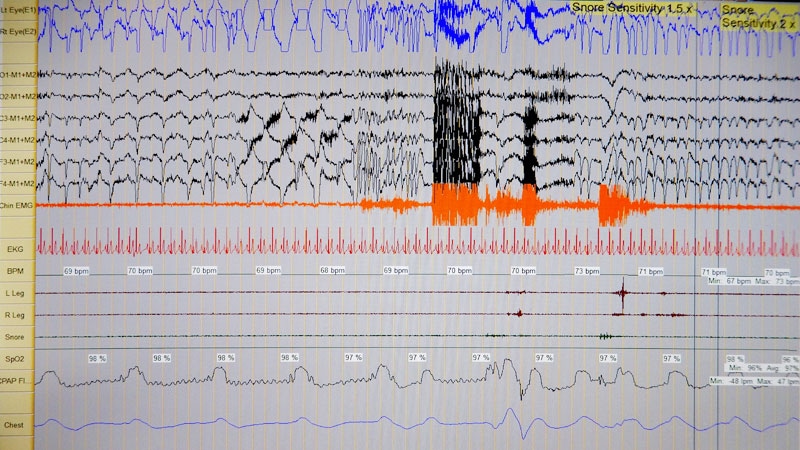The study covered in this summary was published in medRxiv.org as a preprint and has not yet been peer-reviewed.
Key Takeaways
-
Impaired left ventricular (LV) myocardial strain observed in patients with obstructive sleep apnea (OSA) points to subclinical LV systolic dysfunction, which was more pronounced in those who were also obese.
-
Superimposed conditions such as hypoxia and insulin resistance are associated with more severe cardiac functional impairment in patients with both OSA and obesity.
Why This Matters
-
Assessment of cardiac function during the early stages of cardiac insufficiency in obese OSA patients has not yet been reported but with intervention could potentially help in reducing cardiovascular morbidity and mortality.
-
Early impairment of cardiac function in obesity or OSA, such as changes regional contractile strain, may be subtle and therefore challenging to detect on routine echocardiography.
-
Early cardiac functional impairment can be identified using three-dimensional speckle-tracking echocardiography (3D-STE), which can provide a reference for possible early treatment.
Study Design
-
The observational study, conducted at a single center in China, compared 79 patients with mild to severe OSA who were either obese (n = 33) or nonobese (n = 46) with 20 nonobese control subjects in whom OSA was not observed at sleep monitoring. Obesity, in accordance with Chinese standards, was defined by a body mass index (BMI) above 28 kg/m2.
-
Left ventricular strain was assessed by 3D-STE.
-
Candidates who were previously diagnosed with heart failure, coronary artery disease, valvular disease, cardiomyopathy, arrhythmia, chronic obstructive/restrictive pulmonary disease, or thyroid dysfunction and those previously treated with continuous positive airway pressure (CPAP) were excluded.
Key Results
-
Among the 79 participants with OSA, the condition was mild in 12, moderate in 29, and severe in 38. Thirty-three were obese and 46 were nonobese.
-
Fasting blood glucose, glycosylated hemaglobin (HgA1C) levels, and BMI were significantly higher in the OSA group than the control group (P < .05).
-
During polysomnography, time spent below 90% oxygen saturation was significantly longer in the obese group than in the nonobese OSA group.
-
Patients with moderate to severe OSA showed significantly worse cardiac strain than those in the control group (P < .05).
-
Global longitudinal strain (GLS) was positively correlated with BMI, apnea-hypopnea index (AHI), and the homeostasis model assessment of insulin resistance (HOME-IR) (P < .001 for all three parameters).
-
Multiple linear regression analyses showed BMI to be a predictor of GLS and global circumferential strain (GCS). Linear regression analyses showed AHI to be a predictor of GLS and HOME-IR to be a predictor of global area strain (GAS) and global radial strain (GRS).
Limitations
-
The control group included no participants who were obese or overweight.
-
Imaging accuracy with 3D-STE may have been affected by limitations on ultrasound transmission in obese participants.
-
Potential confounders such a blood pressure may have influenced results in this observational study.
-
Definitive conclusions regarding LV myocardial deformation could not be made because of the small sample size.
Disclosures
-
The study received no commercial funding.
-
No authors disclosed financial relationships.
This is a summary of a preprint research study, Evaluation of Left Ventricular Function in Obese Patients With Obstructive Sleep Apnea by Three-dimensional Speckle Tracking Echocardiography, written by researchers at the Peking University Third Hospital, Beijing, on ResearchSquare provided to you by Medscape. This study has not yet been peer-reviewed. The full text of the study can be found on researchsquare.com.

